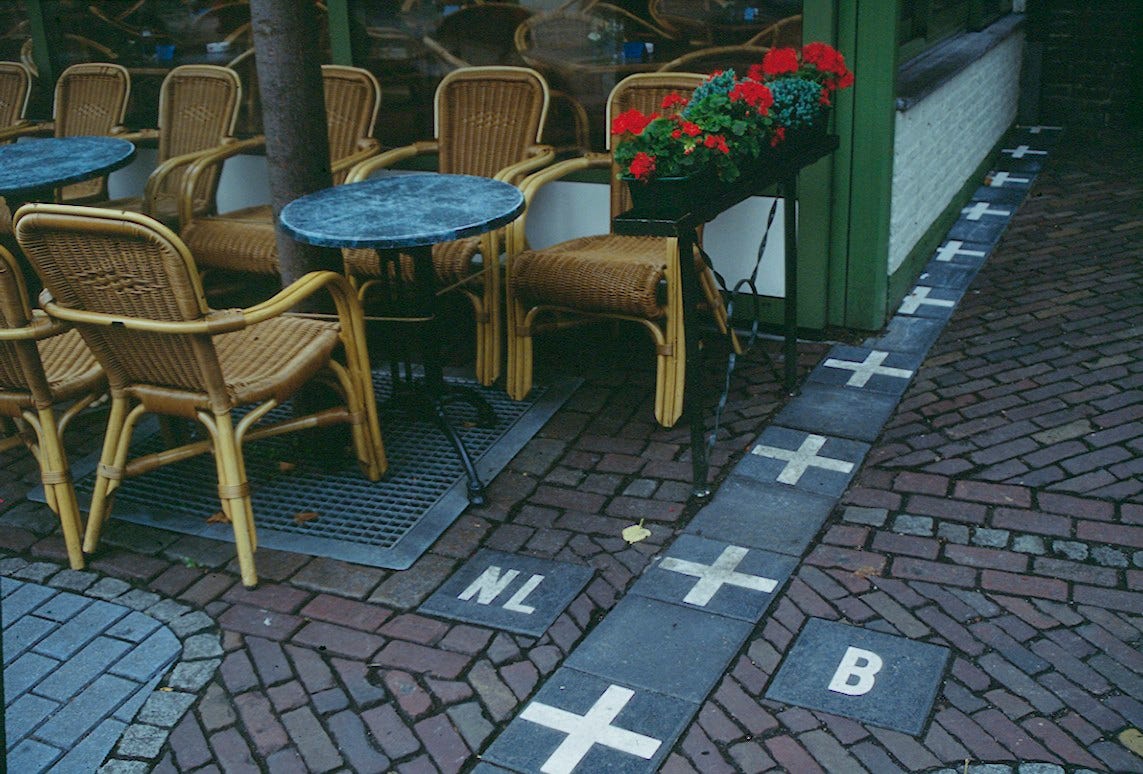Borders are unserious things we treat far too seriously
I spend all day looking at borders and I'm no closer to understanding them than you are

If you’re with me here in the United States, you’ve just been through a pretty hectic and tumultuous election cycle. This election, of course, seemed to be primarily about borders. Not just the U.S.-Mexico border, but the border of the United States as a whole. That little invisible line that determines where the United States begins and where it ends. Of course, every recognized country today has an international border. That’s how the whole global system works. But the more I look at them — and I look at them a lot — the more I think the whole concept is just really, really silly.
But let’s backtrack a bit before I dive into my reasoning and explanation. We’re going to explore how current international borders came to be in the first place because, while I think most people today think of these things are permanent lines drawn in sand, the reality is that borders haven’t existed all that long. At least not the kind of borders we have today. That’s not to say there haven’t been demarcations of who owns what for millennia, but the way in which we enforce borders — who can go through them and, more importantly, who can’t — is vastly different than anytime throughout history. And this concept really only dates back as far as the mid-1600s when a little thing called the Treaty of Westphalia was signed.
A single treaty changed the world
The concept of modern international borders is rooted in the Treaty of Westphalia, which was signed in 1648. It was this pivotal agreement that ended the Thirty Years' War in Europe and marked the beginning of what would really become the modern state system. Prior to this treaty, states weren’t really states at all. They were monarchs and a system of nobility that pledged fealty to that monarch. Those nobles, of course, controlled their own lands and, when the need arose, they could and would switch fealty. So, in essence, borders were never fully solidified. They were moving, changing, adapting, and constantly in flux. This is all HIGHLY simplified, but you get the idea.
The Treaty of Westphalia changed all of this because it introduced the principle of state sovereignty, establishing that each state had the right to govern its territory free from external interference. According to this treaty, no longer were borders attached to monarchs and nobility even though those would continue to exist. Instead borders were drawn to delineate the extent of this sovereignty of the state, setting a precedent for territorial integrity and mutual recognition among other states. In a way, looking back on those monarch-heavy times, this system brought order to chaos and, likely, resulted in fewer minor wars erupting over the decades.
Of course, since this was a European treaty, the Westphalian model would profoundly influence the global political order because Europeans would go on to colonize, and therefor export, their ideas of borders as they saw appropriate. As European colonial empires expanded, they imposed arbitrary borders across continents like Africa, Asia, and the Americas, often with little regard for indigenous peoples or existing cultural and ethnic landscapes. These borders remain a source of tension and conflict in many regions today.
Again, this isn’t to say that various places didn’t have some form of borders. They absolutely did. You need look no farther than the various wars between China, Korea and Japan to know that they had a very clear understanding of borders. But those countries didn’t start the avalanche of international borderization that the Treaty of Westphalia would begin.
All of this eventually leads us to all of the myriad of ways borders are delineated and enforced today. The League of Nations and its successor the United Nations. Passports and passport controls. Immigration and visas and greencards. All of this stems from the Treaty of Westphalia and the modern state system.
Which leads me to my original point…
Borders are kind of dumb sometimes
Now let me be clear here. I’m not advocating for borders going away. I think there are very good reasons for people to govern themselves in ways that make sense for their respective cultures, beliefs, economy and societal ideas. Taking all of that away is a recipe for even more chaos.
That said, it’s hard not to look at the current state of international borders and not think that these things are kind of silly. For example, look at this exclave within and exclave between the United Arab Emirates and Oman.
That’s an exclave of Oman, completely surrounded by the United Arab Emirates, with an exclave of the United Arab Emirates completely surrounded by the exclave of Oman. 😵💫 You can’t make this stuff up!
Or how about Baarle-Nassau between Belgium and the Netherlands?
Yes, there are individual houses within this town that are legally within Belgium, but are otherwise surrounded by the Netherlands. There are even houses and buildings that are split!
You can literally have one leg in Belgium and the other in the Netherlands if you so choose.
Of course, Belgium and the Netherlands don’t really have a hard border anymore due to the European Union so maybe it’s not the best example. So let’s go to someplace a little close to home (for me): the United States-Canada border.
Now the United States-Canadian border is, I would describe, a hard border. That’s not to say the two countries aren’t friendly, but if you have to cross it, you’ll need to go through customs and all that. Despite this, there are homes and even a library that cross over this border! 🤯
In theory you can walk to the back of that library and be in Canada. That is the result of the hard borders we have today as defined by the Treaty of Westphalia.
I could go on and on and on. And I will! But not for this article. I’m creating a video about dumb borders over on YouTube which should come out in a few weeks. But I think the biggest take away that I want you to have from this article is that: borders are dumb sometimes.
That doesn’t mean they’re not necessary, but for something we treat in a super-duper serious manner. Something that has become such a lightning rod in elections all around the world. And something that people get so emotionally obsessed with. Maybe it’s worth pointing out that these things aren’t actual walls. They’re just dumb lines we’ve drawn in literal sand.








And then there are the borders in Africa which for the most part were drawn by a bunch of old white guys in Berlin who had never been and never would actually visit Africa.
In the early 21st C. a Slovenian adventurer and pilot of small aircraft, Matevz Lenarcic, started flying around the world in ultra-light aircraft. He was deliberately making the point that the greatest obstacle to travelling anywhere on earth was no longer the limitations of our understanding and mathematics of navigation; nor was it our ability to know our position and make our way accurately between fixes; or travel non-stop for long distances. In short - all the technological barriers to travel had been solved. But - the One Remaining Barrier - and most thorny one to address, is our human concept of borders and 'control' of land and air spaces. This barrier shows no signs of falling soon.